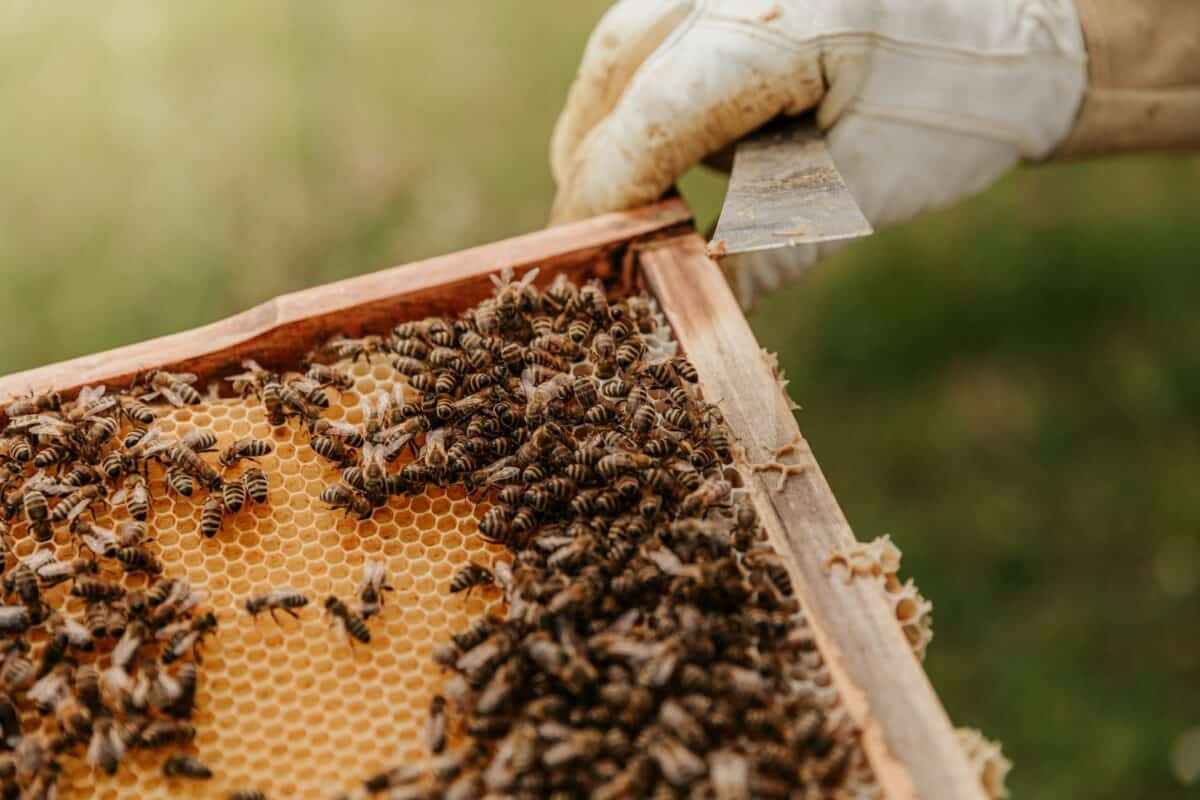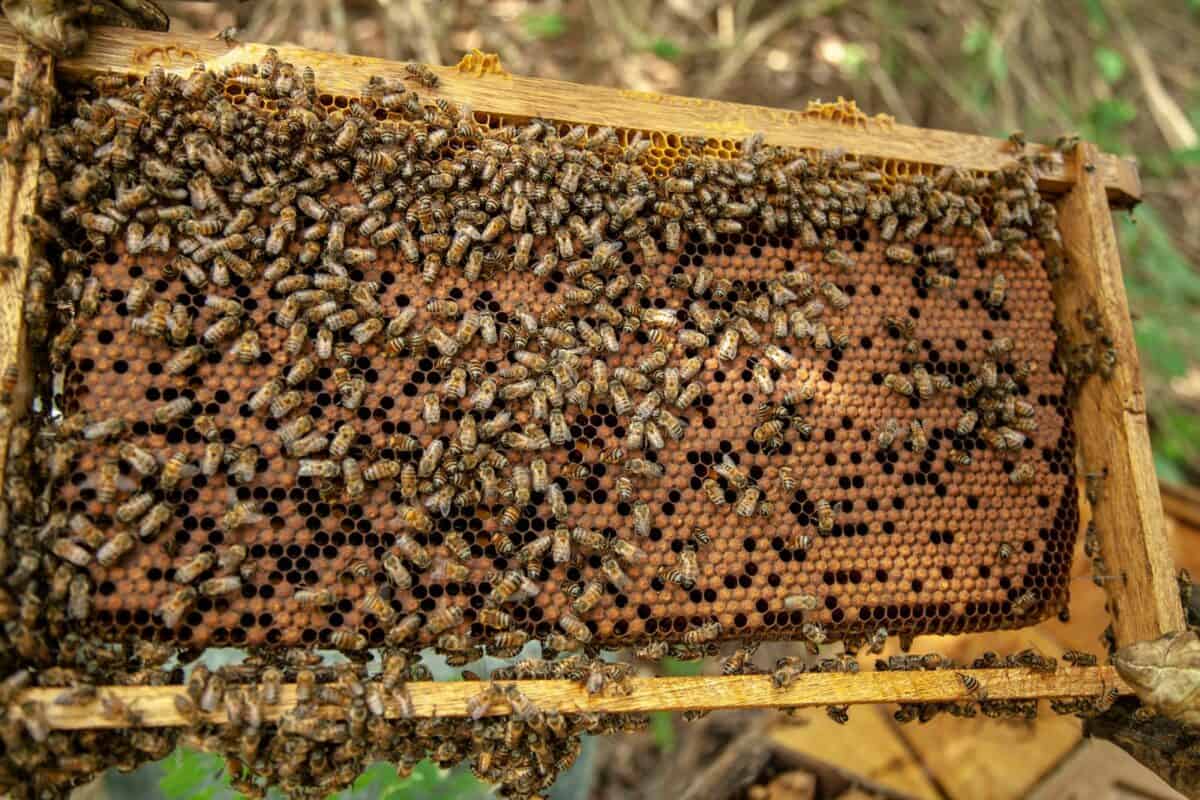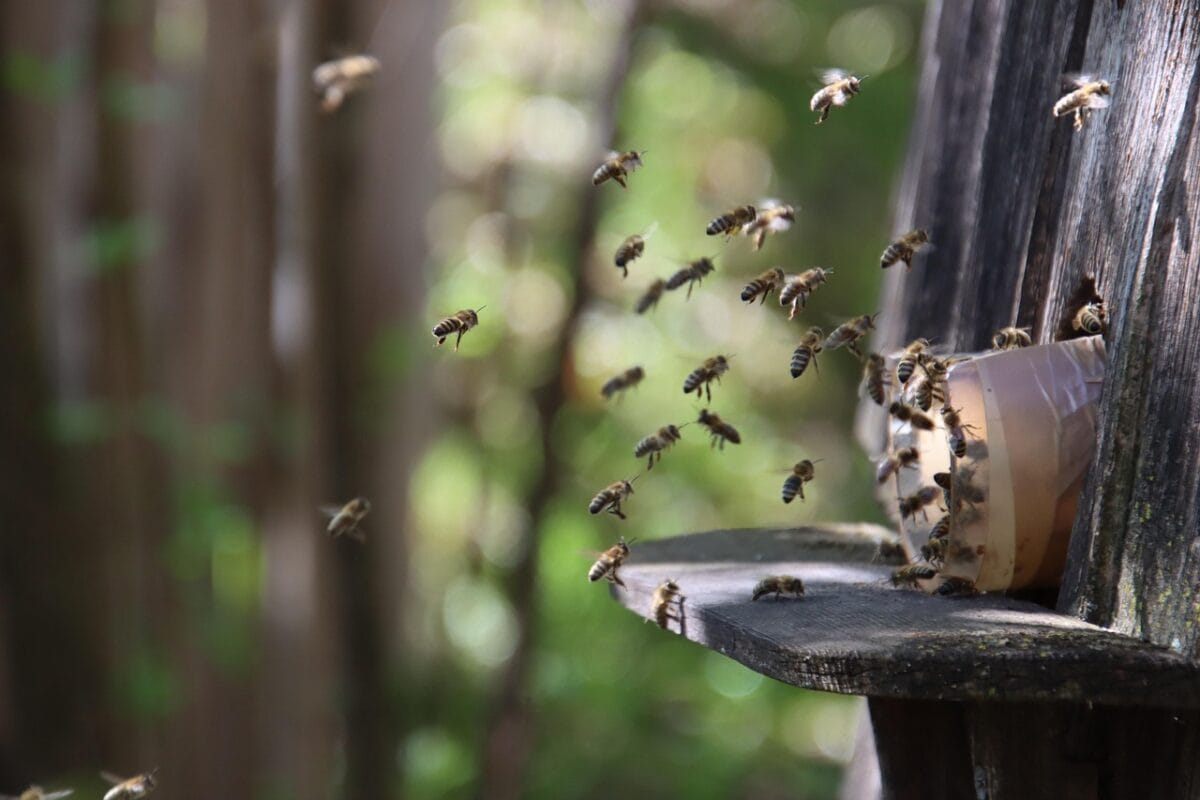Creating a garden that welcomes bees isn’t just an act of environmental stewardship—it’s a way to ensure your garden flourishes through natural pollination while providing critical habitat for these essential creatures. With bee populations facing unprecedented challenges worldwide, from pesticide exposure to habitat loss, home gardens have become vital sanctuaries. A thoughtfully designed bee garden offers food, shelter, and nesting sites throughout the seasons, supporting diverse bee species from early spring through late fall and even winter. This comprehensive guide will walk you through establishing a bee-friendly landscape that remains vibrant and supportive year-round, benefiting both local pollinators and your garden’s productivity.
Understanding Bee Diversity and Needs

Before designing your bee garden, it’s important to understand that “bees” aren’t just honeybees. North America is home to approximately 4,000 native bee species, while globally, scientists have identified over 20,000 species. These range from tiny sweat bees less than a quarter-inch long to large carpenter bees and bumblebees. Each species has unique habits, preferences, and life cycles. About 70% of native bees nest in the ground, requiring patches of bare, undisturbed soil. Others, like mason bees and leafcutter bees, nest in hollow stems or wood cavities. Understanding this diversity helps create a garden that supports multiple species throughout their life cycles. Year-round bee gardens must provide three essential elements: diverse food sources across seasons, clean water access, and appropriate nesting habitats—all in a pesticide-free environment.
Planning Your Garden Layout

An effective bee garden starts with thoughtful planning and layout. Position your garden in a location that receives at least six hours of sunlight daily, as most flowering plants preferred by bees thrive in full sun. Create planting areas in clumps rather than single plants—blocks of at least three feet of the same flower variety help bees forage more efficiently. Incorporate varying heights, from ground covers to shrubs and even small trees, creating a layered habitat that accommodates different bee species’ preferences. When planning paths and access points, use stepping stones with thyme or other low-growing plants between them, maximizing every inch for potential bee forage. Consider wind patterns too; creating windbreaks with shrubs or structures helps bees navigate your garden more easily, as they struggle to fly in strong winds. Finally, position water sources near flowering plants but away from nesting sites to prevent moisture issues.
Spring Bloomers for Early Season Bees

Early spring is a critical time for bee populations as queens emerge from hibernation needing immediate food sources. Ensure your garden provides these resources by planting early bloomers like crocus, snowdrops, and winter aconite, which can flower as early as February in milder climates. Native willows are particularly valuable, producing abundant pollen when few other sources exist. Spring-flowering native trees and shrubs, including serviceberry (Amelanchier), redbud (Cercis), and wild cherry (Prunus), provide significant food sources and should form the backbone of your spring bee garden. For herbaceous plants, include spring beauties (Claytonia), Virginia bluebells (Mertensia), and various native Phlox species. Research by the Xerces Society indicates that early-emerging bumblebee queens heavily rely on spring ephemeral wildflowers, and their successful colony establishment directly correlates with spring food availability. Include at least five different early-blooming species to support the diverse nutritional needs of spring-emerging bees.
Summer Sustenance for Peak Bee Activity

Summer represents peak activity for most bee species, requiring abundant, diverse floral resources. Focus on native plants that have co-evolved with local bee populations—research from the University of Delaware has demonstrated that native plants support up to four times more bee species than non-natives. Key summer bloomers include coneflowers (Echinacea), black-eyed Susans (Rudbeckia), bee balm (Monarda), and various native sunflowers (Helianthus species). Herbs are excellent additions, with oregano, thyme, basil, and lavender providing nectar while being useful in your kitchen. Consider succession planting by selecting varieties with different bloom times, ensuring continuous food sources throughout summer. For example, pair early-summer catmint (Nepeta) with mid-summer anise hyssop (Agastache) and late-summer goldenrod (Solidago). Aim for at least seven different plant species blooming at any given time during summer to support diverse bee dietary needs. Remember to deadhead spent flowers regularly on many perennials to encourage continued blooming, extending your garden’s productivity for pollinators.
Fall Flowers for Late-Season Foraging

Fall represents a crucial period for bees preparing for winter, particularly for colonies storing final honey reserves and late-season species completing their lifecycle. Native asters (Symphyotrichum species) and goldenrods (Solidago) form the cornerstone of autumn bee gardens, flowering from late August through October or even November in warmer regions. Research from the USDA has identified these as supporting the greatest diversity of bee species in fall, with some aster species attracting over 100 different bee types. Sedums, particularly ‘Autumn Joy’ and native varieties, provide accessible nectar sources with their flat flower heads that accommodate both large and small bee species. Late-blooming sages like Mexican bush sage (Salvia leucantha) and pineapple sage (Salvia elegans) offer nectar until frost in many regions. Include at least five fall-blooming species that continue flowering through early frosts. New England aster, aromatic aster, zigzag goldenrod, and snakeroot (Ageratina altissima) are particularly valuable late-season native plants for bees in North American gardens.
Winter Considerations for Year-Round Success

While flowering plants are scarce in winter, your bee garden’s design should include winter habitat considerations. About 70% of native bee species nest underground, overwintering as larvae or pupae in soil chambers. Leave areas of undisturbed, well-drained soil for these ground-nesting species. Cavity-nesting bees like mason bees and leafcutter bees overwinter in hollow stems or wooden tunnels. Rather than cutting back all perennials in fall, leave stems of sturdy plants like echinacea, rudbeckia, and joe-pye weed standing through winter—these provide natural nesting sites. In milder winter regions, include winter-blooming plants like winter honeysuckle (Lonicera fragrantissima), witch hazel (Hamamelis), and mahonia, which provide nectar on warmer days. Studies from the Urban Bee Lab at UC Berkeley have shown that providing winter habitat can increase spring bee abundance by up to 40%. Create wind breaks with evergreen shrubs to protect overwintering sites, and consider installing bee houses for cavity-nesting species, positioning them facing southeast to catch morning sun while avoiding afternoon heat.
Providing Water Sources for Bees

Water is essential for bees year-round, used not only for hydration but also for cooling hives in summer and diluting stored honey for consumption. Create safe water sources by ensuring shallow access points where bees won’t drown. Birdbaths with partially submerged stones or marbles work well, as do shallow dishes with pebbles or floating cork pieces. Position multiple small water sources throughout your garden rather than one large one, reducing competition and travel distance for bees. During hot summer months, check and refill these sources daily as they’ll evaporate quickly. In winter, continue providing water on days above freezing, as bees may become active during warm spells. Keep water sources free from chemicals—avoid using chlorinated water or algaecides. Some research suggests that bees prefer slightly mineral-rich water over purified water, so occasionally adding a small amount of untreated soil to water sources might make them more attractive to bees. Position water sources in partial shade to slow evaporation while keeping them visible and accessible to foraging bees.
Creating Nesting Habitats

Different bee species require diverse nesting habitats, and a truly supportive bee garden provides options for various species. For ground-nesting bees, which represent about 70% of native bee species in North America, maintain patches of well-drained, undisturbed bare soil in sunny locations. These areas should remain free from mulch and dense groundcovers. For wood and cavity-nesting species like mason bees, leafcutter bees, and carpenter bees, incorporate both natural and constructed habitats. Natural options include leaving standing dead tree trunks (when safe) and retaining pithy or hollow plant stems from plants like elderberry, raspberry, and sumac. Constructed bee houses can supplement these, though they require proper design and maintenance. Effective bee houses feature tunnels 4-8 inches deep with varying diameters between 3/32 and 3/8 inch to accommodate different species. Position these houses facing east or southeast to receive morning sun, install them 3-6 feet above ground, and protect them from direct rain with a small overhang. Replace tunnels annually to prevent parasite buildup, cleaning and storing them properly between seasons.
Avoiding Pesticides and Choosing Organic Practices

Pesticide use represents one of the most significant threats to bee populations. Even products marketed as “bee-friendly” can contain ingredients harmful to various bee species. Neonicotinoids, a class of systemic insecticides, are particularly problematic as they persist in plant tissues, including pollen and nectar, for months or years after application. According to research from the Xerces Society, even low-level exposure can impair bees’ navigation, learning, and reproduction. Adopt integrated pest management (IPM) practices instead, starting with prevention through proper plant selection, crop rotation, and encouraging beneficial insects. When intervention is necessary, use mechanical controls like hand-picking pests or using water sprays before considering botanical insecticides as a last resort. Be cautious about purchased plants, as many nursery stock plants contain pre-applied systemic pesticides—ask suppliers about their pest management practices or grow from untreated seeds when possible. Create buffer zones between your bee garden and any areas where neighbors might use pesticides, using hedges or structures as barriers that reduce drift. Remember that fungicides and herbicides can also harm bees, so adopt organic practices throughout your garden for true bee protection.
Selecting Native Plants for Maximum Impact

Native plants form the foundation of effective bee gardens, having co-evolved with local pollinator species over thousands of years. Research from the University of Delaware has demonstrated that native plants support 4 times more bee species and 35 times more bee abundance than non-natives. This relationship stems from specialized adaptations between native bees and plants, including synchronized bloom times with bee emergence, appropriate flower shapes for local species’ feeding structures, and specific nutritional profiles in pollen. When selecting natives, focus on straight species rather than cultivars whenever possible—some studies have found that heavily modified cultivars may produce less nectar or pollen, or have altered flower shapes that limit bee access. Consider your specific ecoregion rather than just your state or hardiness zone; plants native to your immediate region will best support local bee populations. The Pollinator Partnership (pollinator.org) offers excellent regional planting guides identifying key native species for different North American ecoregions. Aim to include at least three native flowering species for each season, prioritizing species that support specialist bees—those that collect pollen from only specific plant families—as these species face greater threats from habitat loss.
Maintaining Your Bee Garden Through the Seasons

Year-round bee gardens require seasonal maintenance tailored to bee needs rather than strict garden aesthetics. In spring, delay garden cleanup until temperatures consistently reach 50°F (10°C) to avoid disturbing overwintering bees in plant stems and leaf litter. When pruning is necessary, place cut stems in an out-of-the-way brush pile rather than removing them entirely, allowing any bee larvae inside to complete development. During summer, implement water-wise irrigation practices, watering deeply but infrequently in early morning, which ensures plants produce optimal nectar while keeping foliage dry to prevent disease. Fall maintenance should be minimal—leave seed heads for birds while keeping stems standing for overwintering insects. If cutting back is necessary for some plants, leave 15-20 inches of stems standing rather than cutting to ground level. Winter maintenance should focus on planning rather than action; use this time to assess the previous year’s bloom succession and identify gaps to fill in the coming growing season. Throughout the year, maintain detailed records of what’s blooming when and which bee species visit different plants, creating a valuable database that helps refine your garden’s effectiveness over time.
Expanding Beyond Your Garden: Community Impact

Your bee garden’s impact extends beyond property lines when you engage with your community. Research from Michigan State University shows that pollinator populations benefit significantly when gardens are clustered within neighborhoods rather than isolated. Connect with neighbors by sharing plant divisions, seeds, and knowledge about bee-friendly practices. Consider organizing a “pollinator pathway” in your neighborhood, creating connected habitat corridors that allow bees to travel safely between supportive gardens. Engage with local schools to establish educational bee gardens, introducing children to the importance of pollinators through hands-on learning experiences. Advocate for bee-friendly policies in your community, such as reduced mowing of public spaces and limitations on pesticide use in parks and municipal landscapes. Many municipalities now offer certification programs for pollinator-friendly properties or reduced stormwater fees for ecological landscapes. Document your garden’s bee visitors with photographs and observations, contributing to citizen science projects like Bumble Bee Watch or iNaturalist that help researchers track bee populations and trends. By sharing your successes and lessons learned, you multiply your garden’s impact, creating a community-wide commitment to pollinator conservation.
Creating a year-round bee garden represents far more than an aesthetic choice—it’s a vital contribution to ecosystem health and biodiversity conservation. By thoughtfully selecting plants that provide continuous bloom succession, establishing diverse nesting habitats, maintaining clean water sources, and eliminating harmful chemicals, you create a sanctuary where multiple bee species can thrive throughout their life cycles. This living ecosystem grows more valuable with each passing season as plant communities mature and bee populations establish themselves in your created habitat. The benefits extend beyond the bees themselves, enhancing your garden’s productivity through improved pollination while creating a deeper connection between you and the natural rhythms of your local environment. As bee populations face unprecedented challenges globally, your garden becomes part of the solution—a demonstration that human landscapes can support rather than diminish biodiversity when designed with ecological principles at their core.
- The Largest Hailstones Ever Recorded in the US—And Their Impact - August 17, 2025
- Koalas Sleep More Than Sloths - August 17, 2025
- How Wild Dolphins Use Medicinal Coral to Heal Wounds - August 17, 2025

